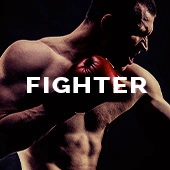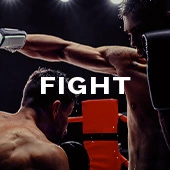Before he moved up to junior middleweight Jaron “Boots” Ennis was the world’s best welterweight.
The victory over Eimantas Stanionis in April was impressive. Stanionis hadn’t been as active as he would have liked, but he’d been consistent, dangerous and undefeated until then – and his activity levels were the fault of those around him, not Ennis.
Ennis didn’t only beat a strong opponent, he beat him convincingly. He dominated that night in Atlantic City.
He also, again, looked big at the weight – as he had done for some time. There had been suggestions that he’d been struggling to make weight for a while and I believed that he was trying to hold out for the big fights at 147, but they passed him by, and he appears to have since outgrown it so moving to 154 is the right move.
There are a lot of tough fights at 154 – so much so that it’s probably more dangerous for him to have moved up than to have stayed at 147 and struggled on the scales. The junior-middleweight division is the deepest in the world in 2025 but it’s also devoid of stars. Ennis was denied the opportunity to be a star at welterweight when he didn’t get the chance to fight Terence Crawford or Errol Spence; even without a figure like Crawford or Spence there, the fights exist at junior middleweight to change that.
Saturday’s fight, at Philadelphia’s Wells Fargo Center against Uisma Lima, represents a solid test for his entry to the picture at 154. One good performance might be all he needs to challenge for a title next – and in any case, he needs to deliver a good performance. There was once an expectation Ennis and Vergil Ortiz Jnr would have a rivalry at 147 like Crawford and Spence did; Ortiz Jnr has already proven himself at 154, so Ennis needs to do the same.
Ennis is a good body puncher; he fights effectively out of both stances, and he’s previously had good power that will be tested by him moving up. But there are times he can be too easy for his opponents to hit; he can also be too attack-minded and overlook his defence. What we don’t yet know is whether those are flaws he’s showed because he hasn’t felt sufficiently threatened at 147 to raise his game.
His popularity has grown in Philadelphia since he started working with Matchroom, after having been mishandled at times by Premier Boxing Champions. The time will regardless come when the opposition has to improve if that popularity is going to grow further, and in a division in which Bakhram Murtazaliev, Israil Madrimov and Ortiz Jnr are among the best there’s little reason for it not to.
That there’s so much else happening, or about to happen, at 154 increases the attention on Ennis-Lima. Sebastian Fundora and Keith Thurman, who fight on October 25, are also fun to watch, and though Fundora is the favourite to win, both have the potential to be dangerous. Xander Zayas is also improving, if less proven than those at the very top of the division, and Abass Baraou was recently elevated to the status of WBA champion, though his abilities mean he should be targeting a better opponent than Conor Benn.
Tim Tszyu has recently moved to reshape his team after a period in which his career was badly mishandled. I continue to question the wisdom of agreeing to fight Fundora at such late notice after Thurman’s withdrawal, even if I admire his bravery. I also continue to believe that had he not been cut that night he would have won. He was then matched with Murtazaliev, a champion no one’s keen to fight. By the time of his rematch with Fundora his confidence had been destroyed – a change of pace and a change of scene could prove exactly what he needs.
*
Ennis’ father and trainer, Derek “Bozy”, was recently recruited by Jack Catterall. There are a lot of good trainers out there – the most important thing is that the trainer and fighter gel. When a trainer and fighter don’t gel it doesn’t mean that they’re bad – it can be a reflection of the chemistry not being right between them. Most trainers will willingly work with most reputable fighters – it’s on the fighter to recognise whether or not a trainer’s methods are what he or she needs.
“Bozy” Ennis being in demand doesn’t necessarily make him the right trainer for Catterall – how their styles do or don’t work together is what will dictate whether or not they succeed. Catterall gives the impression of a fighter who understands his style well. He’s a crafty fighter who’s difficult to beat or look good against when he’s at his best; perhaps he’s attempting to become more physical and aggressive. Not unlike Tszyu, the change of pace and scenery in Philadelphia might also prove what he needs.
A lot of the welterweight contenders without titles are more dangerous than some of the reigning champions. The fight between Nicklaus Flaz and Delante “Tiger” Johnson, on ProBox TV on November 7, is between fighters capable of being champions right now – and Catterall can prove he has similar potential, particularly if he beats Ekow Essuman on November 15.



